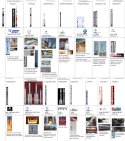F9FT can send 14,460kg to 51.6 degree inclination 400km circular LEO (ISS orbit) using ASDS landing (1), with launch mass 549t. That gives a payload mass fraction of 2.63%. CZ-10A's payload mass figure for LEO can't be referring to a worse LEO orbit than that. CZ-10A's barge landing payload is 14t, with a launch mass of 750t. This gives a payload mass fraction of 1.87%. So F9FT has a payload mass fraction that is 41% higher. This is despite CZ-10A benefiting from scale, staged combustion, and the elimination of landing legs. There seems to be something very suboptimal with the design. The choice to eliminate landing legs and use unproven wire-catching instead, while innovative, raises the suspicion that 14t is indeed the absolute limit, and that CZ-10A wouldn't be able to send the new crewed spacecraft to the space station if it had conventional landing legs.














